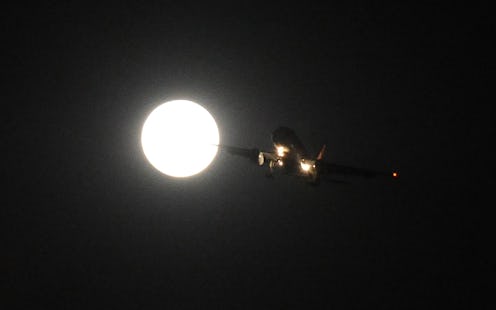In the early hours of Tuesday morning, EgyptAir flight MS804 embarked on a familiar, straightforward route from Paris to Cairo. Minutes before landing, Airbus A320 became undetectable by radar and crashed into the Aegean Sea after making a series of sharp turns, Egypt's defense minister confirmed later in the morning. According to FlightRadar24, the plane had made the same trip just days before on May 16. Before taking off on Wednesday night, in fact, it had already flown to Cairo twice — first from Asmara and then from Tunis. During the week prior to the crash, it had made regular trips to other locations including the capital of Eritrea, Brussels, Beirut, Istanbul, Abu Dhabi, Kuwait City, Athens, Luxor, Alexandria, and Casablanca.
Airbus A320 had been a member of EgyptAir's airline since November 2003.
An image of the aircraft's flight route from Paris to Cairo depicts what should have beeen a straight shot with no sharp turns. It vanished from radar just miles from the coast of Egypt. During a news conference, Greek defense minister Panos Kammenos revealed the only details known regarding the crash. He said that the plane had turned "90 degrees left and 360 degrees to the right, dropping from 38,000 to 15,000 feet and then it was lost at about 10,000 feet."
According to radar, the plane was flying at an altitude of 37,000 feet and showed no signs of malfunction. Former Chairman of the National Transportation Safety Board, Mark Rosenker, told CBS that "very, very few accidents occur at that altitude, about 10 percent." In other words, it's rare for a plane to experience problems at cruising altitude. The Greek navy is currently probing a report from a Greek merchant ship whose passengers claimed to see “an explosion that lit up the sky” about 130 miles east of Karpathos. Investigators are searching for debris in the vicinity.
A transcript of the last two minutes and 43 seconds of the 990's cockpit voice recorder was translated into English and released. Two voices — the departure crew’s pilot, Ahmed Mahmoud El Habashy and the relief crew’s co-pilot, Gamil El Batouty — were identified in the recording. Loud thunks can be heard followed by "I rely on God" and a command to "shut the engines." Including crew members, there were 66 people on board the four-hour-long flight. They came from Egypt, France, Britain, Canada, Belgium, Kuwait, Saudi Arabia, Algeria, Sudan, Chad, Iraq and Portugal.
